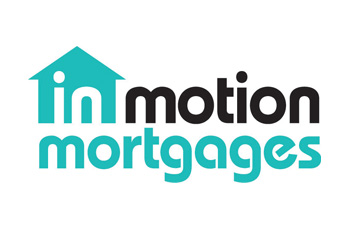The Legal Side of Equity Release Mortgages You Should Know
The Legal Side of Equity Release Mortgages You Should Know
Blog Article
Discovering the Various Kinds Of Equity Release Mortgages Available Today
Equity Release mortgages present different alternatives for home owners aged 55 and over. equity release mortgages. These monetary items provide to various needs and choices, enabling people to access funds from their building. From lifetime mortgages to common appreciation home mortgages, each kind uses distinct benefits. Recognizing these alternatives is important for making informed choices. What factors should one consider when picking one of the most suitable equity Release strategy? The details that adhere to might drop light on this important topic
Comprehending Equity Release Mortgages
Equity Release mortgages give property owners, normally those aged 55 and over, with a method to access the worth bound in their residential or commercial property without needing to offer it. This monetary alternative permits people to convert a section of their home equity into cash money, which can be used for different objectives, such as home improvements, settling debts, or funding retirement.Equity Release can take various types, yet it fundamentally includes loaning versus the worth of the home while keeping ownership. Home owners can pick to get a lump amount or a series of smaller repayments, depending upon their financial requirements and preferences.Additionally, the quantity available for Release is influenced by the residential or commercial property's worth, the property owner's age, and particular lender criteria. In general, recognizing equity Release home loans is crucial for homeowners to make educated choices regarding taking advantage of their home's equity while taking into consideration the long-term implications.
Life time Mortgages
Lifetime home mortgages represent one of the most popular types of equity Release. This financial product allows homeowners, usually aged 55 or older, to borrow versus the value of their building while keeping ownership. The finance, which is protected versus the home, accrues rate of interest with time yet does not need regular monthly settlements. Rather, the finance and accumulated interest are paid back when the home owner dies or moves into lasting care.Lifetime home mortgages use flexibility, as debtors can choose to get a lump sum or opt for a drawdown facility, accessing funds as needed. Significantly, numerous plans featured a no-negative-equity warranty, guaranteeing that customers will certainly never ever owe more than the worth of their home. This function offers satisfaction, allowing people to appreciate their retired life without the fear of depleting their estate. In general, lifetime mortgages function as a sensible choice for those looking for financial backing in later life.
Home Reversion Program

Drawdown Life Time Mortgages
While many property owners look for ways to access their riches, drawdown life time home mortgages present an adaptable option that permits people to Release funds slowly. This kind of equity Release mortgage allows home owners to obtain versus the value of their property while keeping ownership. Unlike standard life time home mortgages, drawdown plans enable debtors to access a portion of their equity upfront and take out added funds as required, approximately an established limit.This function can be especially beneficial for those who want to handle their funds carefully, as it minimizes interest accumulation by only charging passion on the quantities attracted. Furthermore, drawdown lifetime mortgages frequently include a "no unfavorable equity warranty," making certain that borrowers will never ever owe greater than their home's worth. This alternative matches retired people who desire economic protection and adaptability, enabling them to satisfy unexpected costs or maintain their way of life without needing to offer their residential property.
Improved Lifetime Mortgages
Enhanced Lifetime Mortgages offer distinct advantages for qualified homeowners looking for to Release equity from their residential properties. Comprehending the eligibility criteria is essential, as it establishes that can benefit from these specialized financings. It is also vital to assess the possible disadvantages associated with enhanced options, making sure a well-shaped point of view on their usage.
Qualification Requirements Explained
Comprehending the qualification standards for Improved Lifetime Mortgages is essential for potential candidates looking for to access the equity in their homes. Commonly, candidates must be aged 55 or older, as this age requirement is standard in the equity Release market. Property owners should possess a building valued at a minimum threshold, which can vary by lending institution. Importantly, the building should be their primary home and in excellent condition. Lenders frequently analyze the home owner's health and wellness standing, as certain health and wellness conditions may improve eligibility and advantages. Additionally, applicants should not have existing significant debts protected versus the building. Fulfilling these criteria enables people to discover Boosted Lifetime Home loans as a practical choice for accessing funds linked up in their homes.
Advantages of Boosted Mortgages
After clearing up the qualification requirements, go to these guys it ends up being apparent that Improved Lifetime Home mortgages offer several significant benefits for house owners wanting to take advantage of their residential or commercial property equity. Mainly, they offer accessibility to a larger funding amount contrasted to conventional lifetime mortgages, profiting those with wellness conditions or age-related elements that increase their life expectations threat. This enhanced borrowing capacity enables homeowners to fulfill different monetary demands, such as home improvements or retired life costs. In addition, these home mortgages commonly come with flexible settlement options, making it possible for consumers to manage their funds better. The no-negative-equity guarantee further assures that house owners will never owe even more than their residential property's worth, giving peace of mind. On The Whole, Enhanced Lifetime Mortgages offer a compelling alternative for qualified property owners looking for economic remedies.
Prospective Downsides Considered
While Enhanced Life time Home mortgages offer many advantages, potential drawbacks warrant mindful consideration. One considerable problem is the impact on inheritance; the equity released reduces the worth of the estate delegated recipients. Furthermore, these home loans can accrue substantial rate of interest over time, causing a significant financial obligation that might go beyond the initial car loan quantity. There might also be restrictions on residential property alterations or rental, limiting homeowners' flexibility. Furthermore, improved items typically require particular health conditions, meaning not all property owners will certify. Managing the fees and fees connected with these home loans can be intricate, potentially leading to unforeseen prices. As a result, individuals need to thoroughly examine their circumstance and get in touch with financial experts prior to continuing.
Shared Admiration Home Loans
Shared Recognition Mortgages stand for an one-of-a-kind economic setup that enables home owners to gain access to equity while sharing future property worth boosts with the loan provider. This approach offers prospective benefits such as minimized month-to-month settlements, but it also includes downsides that must be thoroughly thought about. Recognizing the qualification requirements is important for those interested in this choice.
Concept Introduction
Equity Release home mortgages, especially in the form of shared recognition home mortgages, use home owners an unique monetary service that allows them to access funds by leveraging the worth of their property. In this setup, a lending institution provides a car loan to the house owner, which is commonly repaid with a share of the property's future gratitude in value. This means that when the homeowner markets the home or passes away, the lending institution obtains a percent of the boosted value, rather than just the first car loan amount. Shared gratitude home mortgages can be appealing for those aiming to supplement their income or financing considerable costs while preserving possession of their home. The financial ramifications of shared admiration need to be meticulously taken into consideration by possible borrowers.
Disadvantages and benefits
Shared recognition mortgages can give significant monetary advantages, they likewise come with noteworthy drawbacks that possible consumers ought to think about. These mortgages permit homeowners to accessibility equity in their buildings while sharing a portion of any future gratitude with the lending institution. This plan can be useful throughout times of rising building worths, offering considerable funds without month-to-month repayments. Nevertheless, the major downside is the potential loss of equity; house owners may end up with significantly reduced inheritance for heirs. Additionally, the complexity of the terms can cause misconceptions regarding settlement obligations and the percentage of appreciation owed. It is crucial for borrowers to consider these elements carefully prior to dedicating to a shared recognition mortgage.

Qualification Demands
What standards must home owners satisfy to get approved for a common admiration home loan? Primarily, candidates need to be at least 55 years of ages, ensuring they are within the target group for equity Release products. In addition, the residential property should be their primary home and generally valued over a defined minimum threshold, often around ? 100,000. Lenders likewise evaluate the house owner's monetary conditions, including income and outstanding financial debts, to determine they can take care of the home mortgage sensibly. his explanation Importantly, the residential or commercial property needs to be in great condition and without significant lawful encumbrances. Home owners need to likewise have a clear understanding of the terms, including exactly how appreciation will certainly be shown to the lender upon sale or transfer of the building, as this affects overall returns.
Picking the Right Equity Release Alternative

Regularly Asked Concerns
What Age Do I Required to Be for Equity Release?
The age need for equity Release normally begins at 55 for many plans. However, some service providers may offer options for those aged 60 and above, reflecting differing terms based on individual circumstances and lending institution plans.
Will Equity Release Affect My Inheritance?
Equity Release visit the site can impact inheritance, as the quantity borrowed plus rate of interest lowers the estate's value. Successors might obtain much less than prepared for, depending on the residential property's admiration and the overall financial obligation at the time of passing.
Can I Move Residence With Equity Release?
The inquiry of relocating house with equity Release occurs regularly. Generally, people can transfer their equity Release plan to a brand-new home, yet details terms and conditions may apply, calling for examination with the loan provider for guidance.
Are There Costs Related To Equity Release Mortgages?
Fees related to equity Release home loans can include plan charges, evaluation costs, and lawful prices. Furthermore, there may be very early payment charges, which can affect the general cost and financial ramifications for the consumer.
Just How Does Equity Release Effect My Tax Situation?
Equity Release can influence one's tax obligation situation by possibly increasing gross income, as launched funds are taken into consideration capital. However, it usually does not sustain immediate tax liabilities, making it vital to seek advice from a financial consultant for tailored guidance.
Final thought
In recap, the variety of equity Release mortgages offered today offers home owners aged 55 and over several pathways to access their building's worth - equity release mortgages. Whether selecting a lifetime home loan, home reversion plan, or other alternatives, each choice offers distinct benefits tailored to individual monetary demands. Mindful factor to consider and appointment with a financial advisor are necessary to assure the chosen equity Release solution aligns with economic conditions and individual goals, inevitably facilitating informed decision-making for a protected economic future. Equity Release mortgages present various options for homeowners aged 55 and over. Equity Release home loans provide home owners, typically those aged 55 and over, with a method to access the value linked up in their building without needing to market it. Improved Lifetime Home mortgages supply distinctive advantages for eligible property owners looking for to Release equity from their buildings. Equity Release mortgages, especially in the kind of common recognition home loans, offer home owners a special financial solution that allows them to access funds by leveraging the value of their residential property. In recap, the range of equity Release mortgages readily available today supplies property owners aged 55 and over several pathways to access their home's value
Report this page